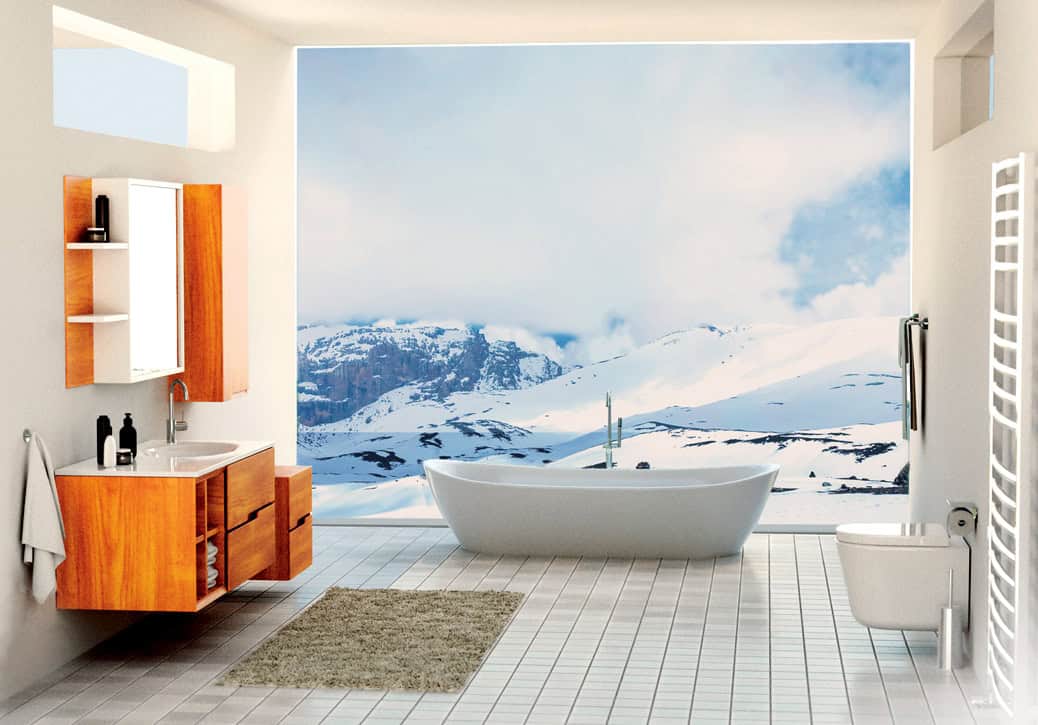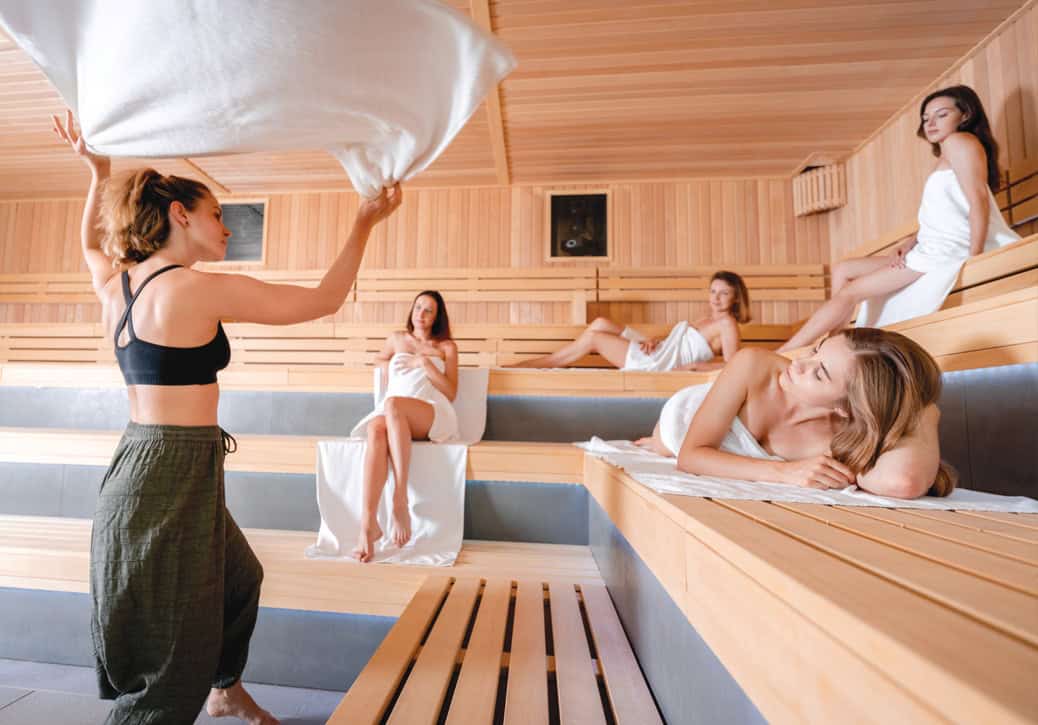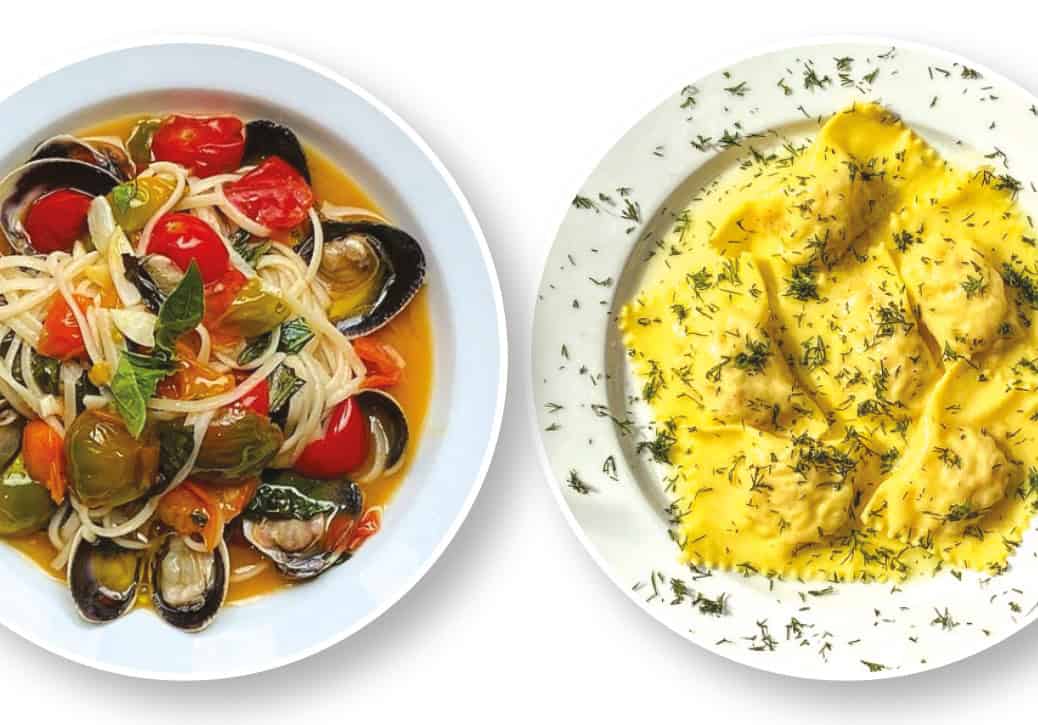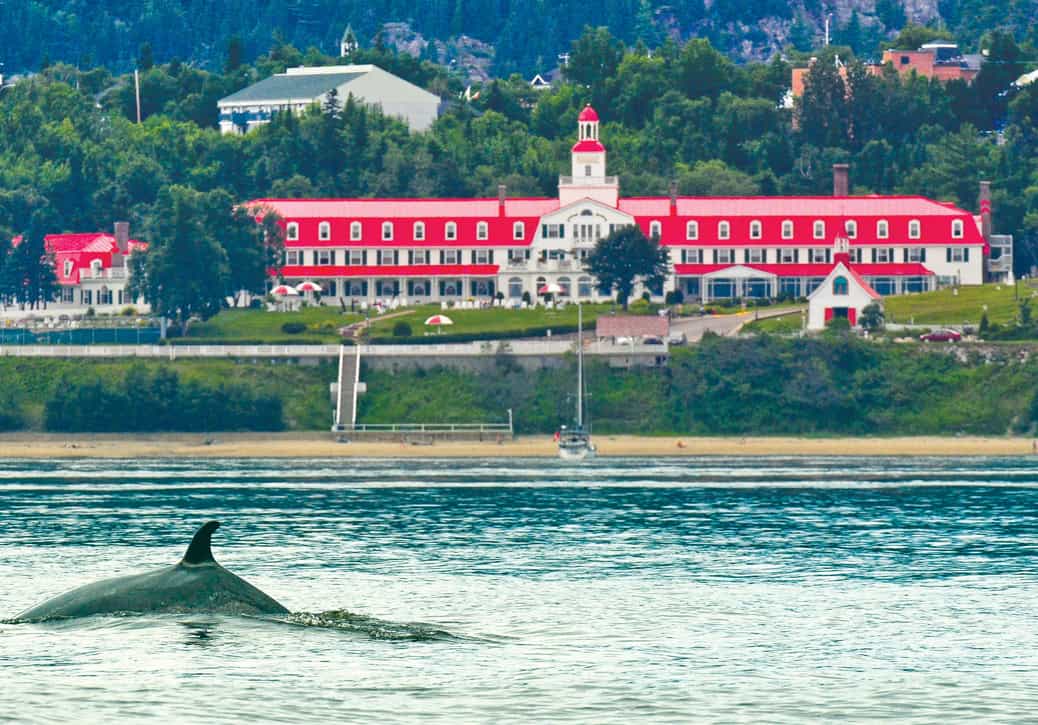Lions, baboons, sommeliers, oh my!
Africa. Visions of Humphrey Bogart and Katherine Hepburn chugging through steamy jungles in the African Queen. Wild animals and pith-helmeted explorers, the winelands of the western cape.
I settle into my seat and do a double-take as a chef in full whites and a toque strides from the galley. “Freshly squeezed orange juice, sir?” he asks. And what would I like for dinner after takeoff? For a delirious moment I’m back in the late 1930s. Should I have dressed for dinner?
Once in the air our chef reappears. Mushroom soup ladled from a tureen, followed by a potpourri of grilled seafood washed down with Champagne. Last but not least, a lovely dessert trolley.
In Istanbul, after a shower and another fine meal in the 20,000- square-foot Turkish Airlines lounge, it’s off to catch the final overnight leg to South Africa.
Cape Grace Hotel
Before I know it, I’m blinking in the bright South African sunshine. My driver from the Cape Grace Hotel ushers me into a gleaming white 7 Series BMW. The hotel has thoughtfully suggested I partake of its signature and reviving Kalahari Rolling Sands Massage at the spa upon arrival. A brilliant idea. I emerge invigorated, refreshed and eager to explore.
On my initial wanderings around the hotel, I discover that Cape Grace has curated more than 300 pieces of rare, early Cape furniture and artefacts, and blended them with modern, often whimsical artworks. This is sotto voce, unfussy luxury.
I soon find myself in the nautical-themed bar area of the hotel’s waterfront Signal restaurant. I pass on the billionaire-priced shot of 50-year-old Glenfiddich—the fine, more affordable whisky-tasting experience is an ideal start to dinner. Carefully crafted by Executive Chef Malika van Reenen, Signal’s menu is a foodie’s dream. The gently spiced springbok on a bed of sweet potato rösti is gloriously rich in both flavour and colour, and its tenderness pairs well with an elegant Stellenbosch Shiraz. I have just enough room for the poached-pear crème brûlée.
As I retire to my rooftop suite, with its stunning views of Table Mountain and Lion’s Head, I realize I should have skipped dessert. An array of goodies, including delicious macarons and homemade chocolate, has been laid out to tempt me. Gone are my visions of the steamy jungle’s deprivations.
capegrace.com
Stellenbosch
The next day, I’m on my way to the wine lands about an hour north of Cape Town. My base will be Stellenbosch, a friendly, walkable, oak-canopied university town, with a Mediterranean-style climate. Its whitewashed Dutch colonial buildings bristle with street sculptures, wine bars, shops and restaurants and, of course, the area is home to about 170 wine producers. If you decide to stay in Stellenbosch, I can recommend the boutique Oude Werf Hotel in the centre of town. Nearby Franschhoek is another popular small town for visitors. It’s often regarded as South Africa’s culinary capital, but is more touristy—a sort of Niagara on the Lake with baboons in the hills. Nestled between the mountains, it’s only about 75 km from Cape Town.
southafrica.net
 Hamilton Russell Vineyards
Hamilton Russell Vineyards
My first wine tour stop is the Hamilton Russell Vineyards, and it’s a gem.
“I’m willing to be as inefficient as I can afford to be,” the eccentric, aristocratic, motorbike-riding wine maker Anthony Hamilton Russell tells me. Doing everything by hand may not be efficient, but it provides vital employment and results in exceptional Burgundy-style wines. Sales have been “uncomfortably brisk” and visitors (he says somewhat forlornly) are limited to one bottle of wine. It’s all that’s left.
In the cellar, for a side-by-side tasting of the 2015 and 2016 Pinot Noirs, I’m in a blissful state—unsurprisingly, as the vineyard is located in the beautiful Hemel-en-Aarde Valley, which translates to “heaven and earth.” Hamilton Russell describes the 2015, a very open opulent vintage, as similar to a Vosne-Romanée in a warm year. The 2016 is more structured and nearer to a Gevrey-Chambertin. Both are exceptional; it’s no wonder they’re sold out. (Back home, I manage to scrounge a few orphaned bottles of the 2015 at my local LCBO, along with some leftovers of Hamilton Russell’s wonderful Southern Right Pinotage.)
Wine is not Hamilton Russell’s only passion. He’s proud that his estate is home to 136 species of birds, five types of turtles and leopards. On top of that, the estate houses and supports the Hemel-en-Aarde Valley Pre-School, the vineyard’s workers and the local community. It, too, is worth a visit.
hamiltonrussellvineyards.com
Avondale
At my next stop, Avondale, Jonathan Grieve eschews motorbikes for ducks, microbes and healthy predators.
Grieve, a jaunty figure with a rakish hat and red sweater, strides ahead of me into the vineyard searching for his 100 white pekin ducks. We find them gorging on snails and other unwanted critters. They bring life-force to the vineyard, Grieve tells me, launching into an evangelical dissertation about “soil health.” Healthy soil, of which he has 13 varieties, equals healthy vines in his books. Driven by a theory of “restocking the larder,” he feeds his dirt beneficial fungi, bacteria and nematodes. If pests have the temerity to invade this Eden, Grieve has been known to resort to an array of beneficial microbes, bacteria and waspy predators. This is biodynamic wine making at its finest.
I’m skeptical as we retreat to the tasting room. Everything is done as gently and as naturally as possible. Wines from each “block” are handled separately and naturally fermented with very little sulphur and 100 per cent indigenous yeast. Grieve’s aim is to produce elegant wines. And he does.
Of the wonderful wines I taste, I have a particular preference for the Cyclus: A blend of Roussanne Viognier, Chenin Blanc, Chardonnay and Semillon. “A ballerina with boxing gloves” is how Grieve describes it.
The 2015 Jonty’s Ducks Pekin White Chenin Blanc is a lush, velvety wine with good balance and juicy acidity. Unfortunately, it’s one of only two Avondale wines stocked by the LCBO. It’s become a daily quaffer in our household.
avondalewine.co.za
Thokozani
“Thokozani” means “a celebration” and a visit here is a complete 360 degrees from what I’ve seen so far. CEO and major shareholder Denise Stubbs is clear: “Wine first, story second” she insists. “Our story is about our award-winning quality wines, not just that
we are a black empowerment winery.”
Having told me about turning her farm workers into shareholders, Stubbs proudly shows me the winery’s Platinum Award from the Michelangelo International Wine and Spirit Awards, which it received for its ethically produced 2016 Shiraz Mourvèdre Viognier (SMV).
Stubbs is no slouch when it comes to selling either, having won a 2015 Cape Chamber of Commerce award for exporter of the year in her category.
I try several first-rate red and white wines with some innovative food pairings, including such exotic dishes as potato cake topped with smoked snook. Chocolate and truffles are also available. My heart goes out to the Rhone-style award-winning 2016 SMV. It has a silky smooth taste, with balanced tannins and notes of smoked bacon and vanilla. (It’s unfortunate that Thokozani’s wines are unavailable in Ontario).
thokozani.co.za
Durbanville Hills and a Table Mountain Wine Safari
Zooming past the snaking lines of sweltering tourists waiting for the Table Mountain cable car, my safari guide Henri unlocks a gate to an off-limits road that leads to the remote and spectacular Devil’s Peak. The road winds through rocky outcrops with commanding views over Table Bay as we approach an isolated spot in the shadow of the King’s Blockhouse, a national monument. Henri keeps up a fascinating patter about the mountain, Cape Town and the local flora and fauna. We even have park ranger Benson on board, so we’re well taken care of. Our over-indulgence of fine Durbanville Hills wine is completely worry free.
As we quaff fine wine and tuck back our charcuterie, a small band of dusty, out-of-breath Australian hikers stumble around the headland. They seem to have difficulty believing what they see of us. Henri graciously offers them some wine. Refreshed, they head off and I’m certain I hear one of them mutter, “Bloody hell. We should have done that!”
Later I meet up with Martin Moore, the larger-than-life cellar master at Durbanville Hills, in his stunning modern winery and restaurant on the hillside. Grapes have been grown here since 1694. He invites me to where the magic takes place, his laboratory, and lets me taste two samples of the super-premium 2015 Tangam Red. My hopes are dashed—the entire release is already spoken for.
We retire to Durbanville’s tasting room, where Moore has arranged an elegant wine and chocolate pairing. A local chocolatier actually produces custom chocolate to match each vintage and varietal. Together, we sip through selections ranging from a fun, sparkling Sauvignon Blanc paired with gooseberry- and peach-infused white chocolate, to peppery Shiraz set off against a clove- and cardamom-flavoured bar. By a whisker, my favourite is the 2017 Chenin Blanc with peach and jasmine white chocolate. Yum.
durbanvillehills.co.za
Recommended wineries if you go…
Alto Wine Estate: Alto is an intimate estate with a small collection of consistently outstanding red wines, including the flagship Bordeaux blend MPHS. Sitting at a table on the small patio, finishing up with sips of Alto’s Fine Old Vintage Port as the sun mellows the surrounding mountains, is to have a glimpse of heaven. alto.co.za
Fairview: Known in Canada for Goats do Roam and The Goatfather, the Fairview estate really does have goats—500 of them, along with a goat tower and goat yoga classes. The winery has many serious wines, as well as farm-produced cheeses, olive oil and bread all available in the store and tasting room. Also visit the Spice Route farm next door and sample beer from the Cape Brewing Company. fairview.co.za
Spier Wine Farm: Spier is a must-see, very popular wine estate that is dotted with white-washed heritage buildings, including a beautiful old manor house. Scattered about in the expansive grounds are art works by local artists. In Ontario, unfortunately only their inexpensive but good value wines are available. Time your visit for lunch at Eight Restaurant. spier.co.za
Nederburg: This was Platter’s Wine Guide Winery of the Year in 2017. It has a modern tasting room and a wide range of wines. My idiosyncratic favourite is the elegant Beautiful Lady Gewürztraminer: Perfumed aromas of rose petals with lychee and pineapple notes, and fine acidity. Stop for lunch at Nederburg’s Red Table restaurant. nederburg.com
Ken Forrester Wines: Ken Forrester is also known as “Mr. Chenin.” Platter’s Wine Guide has described his 2015 FMC from old bush vines as having “achingly beautiful apricot fruit & creamy harmony.” I agree. A limited supply at the LCBO last year sold out in two days. Ken and his wife Teresa are delightful hosts. Call ahead. kenforresterwines.com
Die Bergkelder Wine Centre: Marvel at this cellar and tasting room hollowed out of a mountain. Monthly wine and salt pairings are created by Chef Craig Cormack. There is a wide range of wines on offer including the Fleur du Cap range, some of which are sold in Ontario. Try the exceptional and elegant Lazlo Bordeaux blend. Finish with the Late Harvest Noble, in which abundant tropical fruit and nice acidity set off the paired salted fudge. fleurducap.co.za/die-bergkelder
Plaisir de Merle: This winery has a stunning location under the granite Simonsberg Mountain. Sit in the elegant tasting room or, better, find a chair under the trees and look for fish eagles. Plaisir de Merle is noted for red wine. Try the velvety Grand Plaisir Bordeaux-style blend. plaisirdemerle.co.za
Tokara: This family-owned vineyard has a striking modern restaurant and tasting room in a spectacular setting on a ridge outside Stellenbosch. Peacocks and sculptures adorn the grounds. Excellent food. Sadly my favourite wine, the juicy, rich, Bordeaux-style Director’s Blend, is not available in Ontario. tokara.com
Boschendal: This very large estate has the magnificent Groot Drakenstein mountains as a backdrop. Well-appointed historic farm cottages are available for overnight stays. Eating options include the fine-dining Werf restaurant, The Deli and The Farmshop & Butchery. The Manor House, which dates back to 1812, has elegant facilities for private tastings. boschendal.com
Boekenhoutskloof: Marc Kent and Gottfried Mocke consistently turn out fine premium wines. The Chocolate Block, a five-wine blend, is an approachable, velvety, elegant wine that is available in Ontario. The estate has a funky tasting room. By appointment only. boekenhoutskloof.co.za
Rustenberg Wines: This magnificent and scenic estate was founded in 1682, split up in the 1790s and reunited in 1945 by Peter Barlow. Grandson Murray Barlow is a justifiably celebrated young wine maker. Rustenberg produce some of the finest Stellenbosch wines. Many are available in Ontario, including my favourites Buzzard Kloof Syrah and John X Merriman (a Bordeaux blend). rustenberg.co.za
Stark-Conde: José Conde is a US-born former graphic designer who turns out excellent red wines, particularly Cabernet Sauvignons and Syrahs, from vertiginous vineyards—despite trouble with baboons. stark-conde.co.za
Creation: JC and Carolyn Martin run a smaller new estate in a secluded valley cooled by ocean winds. It’s ideal for cool-climate grapes. Creation’s Reserve Pinot Noir is sumptuous but not overpowering, and its single-site Art of Creation Chardonnay is elegant and poised. The food and wine pairings for brunch or lunch are imaginative and beautifully prepared. Call to reserve. creationwines.com













